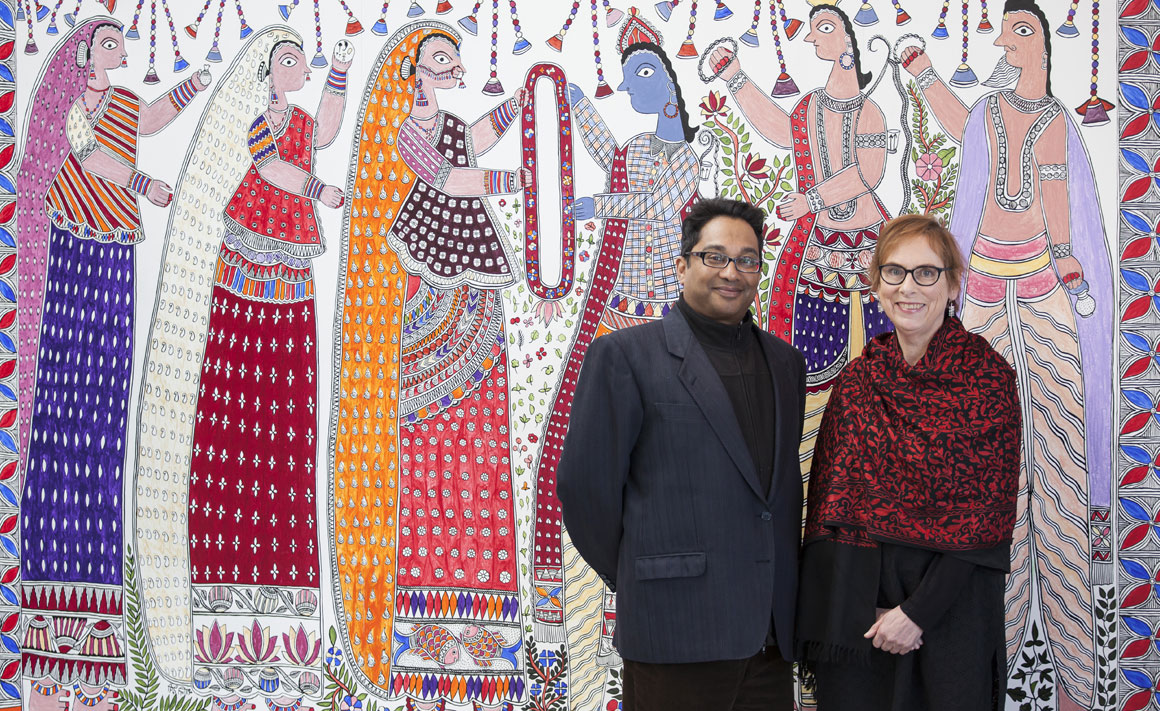 Monday 3 February 2014 1:24pm
Monday 3 February 2014 1:24pm
The burgeoning global influence of Asia has prompted major research initiatives at the University of Otago, including the Asian Migrations Research Theme. It brings together researchers from throughout the University who are interested in the movement of people and ideas within Asia and into the Pacific, including New Zealand.
Kiwi multiculturalism
Associate Professor Jacqueline Leckie (Anthropology and Archaeology) became fascinated with Indian history while studying at Otago and fell in love with India while living and researching there in the 1970s; she did her PhD on the history of Indians in New Zealand.
One of the founding directors of the Asian Migrations Research Theme, Leckie specialises in Indian migration into the South Pacific, particularly to Fiji and New Zealand.
She says that New Zealand has a long and rich history of engagement with Indian people and culture, beginning with Indian sailors who came here as crew on ships from the late 18th century and continuing with permanent settlers from the late 19th century.
Leckie says that Indian people have since made significant contributions to New Zealand. She cites, as an early example, Indian migrants who were crucial in opening shops and providing basic goods and services in small-town New Zealand.
Individuals who have made personal contributions include Sir Anand Satyanand, the first person of Asian ethnicity to become a New Zealand Governor-General. Satyanand was born in New Zealand, but his grandparents migrated from India to Fiji and his parents from Fiji to New Zealand.
Leckie co-edited a recent book, Asians and the New Multiculturalism in Aotearoa New Zealand. It is one of the many books, articles, symposiums, seminars, masterclasses, postgraduate studies and visits from scholars arising out of the Asian Migrations Research Theme.
Leckie explains that it is the first book to address New Zealand's large Asian population and the tensions between New Zealand as a bicultural and multicultural nation.
“The book came out of a symposium at Otago that tried to think about what multiculturalism means in New Zealand. We have had a lot of debates about biculturalism, but we haven't really addressed the fact that we are also multicultural,” Leckie asserts. “Multiculturalism is a lot more than having lovely food festivals: it is about how people fit into a society, how they feel they belong to a society.”
Leckie says that the book focuses on Asian perspectives on multiculturalism partly because this has been neglected within past debates on multiculturalism, and because of the dramatic rise in New Zealand's Asian populations since the relaxation of immigration rules from 1987.
“The main thing we were trying to do in the book was to show how Asians are a really important part of the changing New Zealand demographics and how that relates to multiculturalism.
“New Zealanders still have to engage with the huge ethnic diversity that we face in contemporary New Zealand and the substantial increase in the proportion of New Zealanders with Asian heritage.”
She notes that in the 2013 census, nearly 12 per cent of people identified as Asian, which had almost doubled since the 2001 census. She says that Indians constituted the largest increase among Asian ethnicities, nearly twice as many as in the 2006 census, although Chinese still constitute the largest Asian ethnic group. The large increase in the Indian population was reflected in Hindi becoming the country's fourth most common language.
The book concludes with an article by Leckie that references Lalita Hari, who has an Indian father, Māori mother and European husband. Leckie says that Hari's life points to the complex future of New Zealand's multicultural population.
“Lalita's story reminds us that, regardless of the intellectual and political debates about multiculturalism, it is a lived reality being constantly negotiated throughout people's lives and daily activities.”
Leckie adds that it is unfortunate that the recent debate on Asian migration to New Zealand has narrowly focused on Chinese property purchases.
“The way the debate has been framed in the popular discourse and in the media is highly influenced by historical stereotypes and certain politicians have played the 'Asian card' to promote a certain type of nationalism,” Leckie says.
Sub-continental movements
Dr Gautam Ghosh (Anthropology and Archaeology), who co-edited Asians and the New Multiculturalism in Aotearoa New Zealand, has a professional and personal interest in Asian migration. He was born in the United States and migrated to New Zealand with his wife and son in 2008, but his parents were originally from Bengal.
Ghosh has a particular interest in migration within the region.
“The vast majority of Asian migration happens within Asia, linked to changes in Asian economies, and that means that the cultures of Asia are changing.”
Ghosh has specialised in studying Bengali migration, following the 1947 partition of British India, when the Hindu-dominated West Bengal remained a part of India, and the largely Muslim East Bengal became East Pakistan (later Bangladesh). He completed his PhD on post-partition Bengali migration.
“The division between the east and west was primarily on religious lines, so religion is a significant component of what causes these migrations and how these migrations are interpreted,” Ghosh explains. “Hindus in East Bengal, like my parents, moved to what became India because they saw themselves as Indians and wanted to live in India, but they lost everything because they fled overnight.”
Ghosh's recent work includes a journal article on contemporary migration of Bangladeshis – mostly Muslim – to India, which he says “has been used by Hindu chauvinists to embolden anti-Muslim attitudes”.